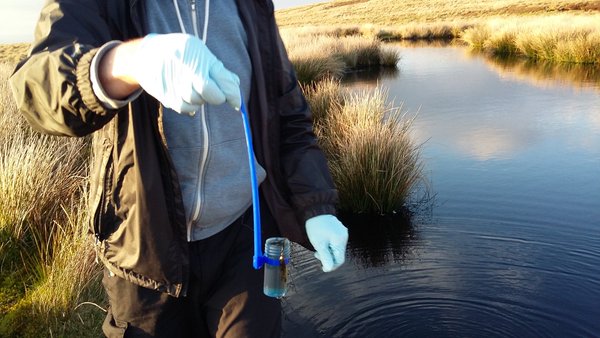Great Crested Newts: a new beginning for protecting a special animal
9th March 2017
Dr Jeremy Biggs comments on the big changes to how Great Crested Newts are being protected from development
 Great Crested Newt (c) David Orchard
Great Crested Newt (c) David Orchard
Great Crested Newts are spectacular and beautiful amphibians. They are also given a very high level of protection in Britain’s laws which make it an offence to injure individual animals or damage their habitats. Like most freshwater wildlife Great Crested Newts are less common than they used to be, but they are still quite widespread in lowland Britain. Recent projects using environmental DNA (eDNA) have given us a better idea of how widely they are found in England, where most of the population occurs:
- About a quarter (26%) of 1 km grid squares across England have ponds with Great Crested Newts.
- In each occupied 1 km square, on average just over half the ponds (55%) have Great Crested Newts.
- Across all ponds in England, around 13% of ponds are occupied by Great Crested Newts. There are previous estimates from other surveys which give values that are similar (i.e. Swan & Oldham 1993 = 11%, Wilkinson & Arnell 2013 = 12%).
 PondNet volunteers collected eDNA samples from ponds across England & Wales to detect Great Crested Newts (c) CaroRance on Twitter
PondNet volunteers collected eDNA samples from ponds across England & Wales to detect Great Crested Newts (c) CaroRance on Twitter
So although Great Crested Newts are specially protected, they are widespread and, on average, where they are found are likely to be in half the ponds. This means that if you are a builder, or want to drive a new road or pipeline across the countryside and you are affecting ponds, you are likely to encounter this animal, and so be required by law to protect it.
This has led to some expensive work to protect the species. Some of this has been very successful – the protection of the about half of the former brickworks ponds south of Peterborough has saved what is widely thought to be Western Europe’s largest single population of the species. This is one of Britain’s Flagship Pond sites, and is also remarkable for other special plants and animals found in the several hundred ponds on this site, not just newts.
But elsewhere, efforts to protect individual ponds in fields or on brownfield sites but now surrounded by housing, or moving newts to new ponds have been much less successful – and often no more than a very costly way of delaying the inevitable demise of the newts. Newts need surprisingly good quality habitat, better than provided by typical gardens and suburban habitats, and making ponds for them is skillful work and this mitigation work has proved to be largely unsuccessful. Now, the government is trialing a new approach where money spent on ineffective mitigation is reallocated to conservation projects which really benefit newts – making high quality new terrestrial habitat and ponds, as well as managing existing ponds where it can be shown that this will be beneficial (remember many ponds are polluted and simply clearing them of trees, which ought to benefit newts, will just allow algae and duckweed to flourish). The Freshwater Habitats Trust is closely involved in this work, and we believe the concept is right. But there is an important proviso: it is crucial that the new ponds, and the new terrestrial habitat, is of the highest quality and in the best places for newts because the risk of failure is considerable if they aren’t. Even though the situation can scarcely be much worse than now: the application of the law about Great Crested Newts risks bringing wildlife law more generally into disrepute – a very dangerous situation – and added to this has made little difference to the newts, so it’s vital we get this right.
Find out more
- Visit our research library to see the results from our 2015 and 2016 PondNet Great Crested Newt eDNA surveys.
- Read more about eDNA and our work to develop the Great Crested Newt survey method.
- Use the Pond Creation Toolkit to help you make new clean water ponds that are great for wildlife, including amphibians.
